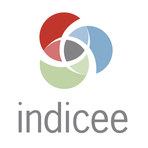Bridging the AI Confidence Gap: Challenges and Opportunities Ahead
October 24, 2024, 3:46 am

Location: United States, Illinois, Chicago
Employees: 10001+
Founded date: 1993
Total raised: $1.49B

Location: United States, Florida, Jacksonville
Employees: 5001-10000
Founded date: 1841
In the bustling world of artificial intelligence, a storm brews beneath the surface. Despite the hype and investment, many AI professionals feel like sailors lost at sea. A recent survey by DataRobot reveals that only 34% of AI practitioners believe they have the tools necessary to meet their business goals. This statistic is a clarion call for organizations to reassess their AI strategies.
The survey, which included over 700 AI professionals, paints a stark picture. It highlights four major pain points: monitoring and observability, generative AI development, implementation and integration, and collaboration. Each of these areas presents unique challenges that can hinder the effective deployment of AI solutions.
**Monitoring and Observability: The Watchtower Dilemma**
Imagine a watchtower overlooking a vast landscape. The view is essential for spotting potential threats. Yet, 45% of survey respondents struggle with monitoring the reliability of their AI models. Even in mature organizations, ensuring consistent performance remains a daunting task. Real-time monitoring is akin to keeping an eye on a restless child; it requires constant vigilance and adaptability. Without reliable oversight, AI outputs can become unpredictable, leading to costly mistakes.
**Generative AI Development: The Labyrinth of Creation**
Next, we venture into the labyrinth of generative AI development. Here, 35% of respondents reported difficulties in building application interfaces and hosting environments. The path is fraught with unclear expectations and complex prototyping processes. It’s like trying to navigate a maze without a map. As generative AI continues to evolve, organizations must simplify their development processes. Clear guidelines and streamlined tools are essential to help practitioners find their way.
**Implementation and Integration: The Jigsaw Puzzle**
The integration of AI solutions often resembles a jigsaw puzzle with missing pieces. With 27% of respondents expressing frustration over delays in deployment, the complexity of integrating diverse toolsets becomes evident. Organizations frequently encounter bottlenecks during handoffs between teams. This is especially true for those relying on solutions from hyperscalers. The result? A fragmented approach that stifles innovation and slows progress. To overcome this, businesses must prioritize interoperability and invest in tools that facilitate seamless integration.
**Collaboration: The Siloed Fortress**
Collaboration is the lifeblood of successful AI projects. Yet, 20% of respondents identified fragmented workflows as a significant barrier. Multiple roles are involved in AI development, but without effective communication, teams can become siloed. This isolation can lead to misunderstandings and delays. Organizations must foster a culture of collaboration, breaking down barriers and encouraging cross-departmental teamwork. Only then can they harness the full potential of their AI initiatives.
**The Confidence Gap: A Growing Concern**
The survey also reveals a troubling confidence gap. While 90% of respondents believe predictive and generative AI will converge within the next year, 71% lack confidence in their ability to deliver effective AI solutions. This disconnect is alarming. As AI continues to evolve, organizations must equip their teams with the necessary tools and training. A lack of confidence can stifle innovation and hinder progress.
Moreover, 53% of respondents expressed a desire for tools that allow them to work in both code and graphical user interface (GUI) environments. This flexibility is crucial for fostering efficient workflows and collaboration. Vendors must respond to this demand by providing solutions that cater to diverse working styles.
**Best Practices: The Roadmap to Success**
As organizations navigate the complexities of AI, the need for best practices becomes paramount. Over half of the respondents (57%) want vendors to offer guidance on developing and deploying AI solutions. This demand highlights the importance of establishing clear frameworks and methodologies. By providing practitioners with proven strategies, organizations can enhance their confidence and improve outcomes.
**The AI Ecosystem: A Cambrian Explosion**
The landscape of AI tools and frameworks is experiencing a Cambrian explosion. Thoughtworks’ recent Technology Radar emphasizes the rapid advancement of AI-adjacent tools. These innovations are designed to help developers build AI solutions more effectively and responsibly. However, with so many options available, organizations must carefully assess their specific use cases. The right tools can empower teams, but a scattergun approach can lead to chaos.
**Conclusion: Navigating the Future of AI**
The road ahead for AI is fraught with challenges, but it is also filled with opportunities. Organizations must address the confidence gap and invest in the right tools and training. By fostering collaboration and streamlining processes, they can unlock the full potential of AI. The key lies in understanding the unique needs of their teams and adapting to the evolving landscape.
As the AI revolution continues to unfold, businesses must be prepared to navigate the complexities. With the right strategies in place, they can transform challenges into stepping stones for success. The future of AI is bright, but only for those willing to confront the obstacles head-on.
The survey, which included over 700 AI professionals, paints a stark picture. It highlights four major pain points: monitoring and observability, generative AI development, implementation and integration, and collaboration. Each of these areas presents unique challenges that can hinder the effective deployment of AI solutions.
**Monitoring and Observability: The Watchtower Dilemma**
Imagine a watchtower overlooking a vast landscape. The view is essential for spotting potential threats. Yet, 45% of survey respondents struggle with monitoring the reliability of their AI models. Even in mature organizations, ensuring consistent performance remains a daunting task. Real-time monitoring is akin to keeping an eye on a restless child; it requires constant vigilance and adaptability. Without reliable oversight, AI outputs can become unpredictable, leading to costly mistakes.
**Generative AI Development: The Labyrinth of Creation**
Next, we venture into the labyrinth of generative AI development. Here, 35% of respondents reported difficulties in building application interfaces and hosting environments. The path is fraught with unclear expectations and complex prototyping processes. It’s like trying to navigate a maze without a map. As generative AI continues to evolve, organizations must simplify their development processes. Clear guidelines and streamlined tools are essential to help practitioners find their way.
**Implementation and Integration: The Jigsaw Puzzle**
The integration of AI solutions often resembles a jigsaw puzzle with missing pieces. With 27% of respondents expressing frustration over delays in deployment, the complexity of integrating diverse toolsets becomes evident. Organizations frequently encounter bottlenecks during handoffs between teams. This is especially true for those relying on solutions from hyperscalers. The result? A fragmented approach that stifles innovation and slows progress. To overcome this, businesses must prioritize interoperability and invest in tools that facilitate seamless integration.
**Collaboration: The Siloed Fortress**
Collaboration is the lifeblood of successful AI projects. Yet, 20% of respondents identified fragmented workflows as a significant barrier. Multiple roles are involved in AI development, but without effective communication, teams can become siloed. This isolation can lead to misunderstandings and delays. Organizations must foster a culture of collaboration, breaking down barriers and encouraging cross-departmental teamwork. Only then can they harness the full potential of their AI initiatives.
**The Confidence Gap: A Growing Concern**
The survey also reveals a troubling confidence gap. While 90% of respondents believe predictive and generative AI will converge within the next year, 71% lack confidence in their ability to deliver effective AI solutions. This disconnect is alarming. As AI continues to evolve, organizations must equip their teams with the necessary tools and training. A lack of confidence can stifle innovation and hinder progress.
Moreover, 53% of respondents expressed a desire for tools that allow them to work in both code and graphical user interface (GUI) environments. This flexibility is crucial for fostering efficient workflows and collaboration. Vendors must respond to this demand by providing solutions that cater to diverse working styles.
**Best Practices: The Roadmap to Success**
As organizations navigate the complexities of AI, the need for best practices becomes paramount. Over half of the respondents (57%) want vendors to offer guidance on developing and deploying AI solutions. This demand highlights the importance of establishing clear frameworks and methodologies. By providing practitioners with proven strategies, organizations can enhance their confidence and improve outcomes.
**The AI Ecosystem: A Cambrian Explosion**
The landscape of AI tools and frameworks is experiencing a Cambrian explosion. Thoughtworks’ recent Technology Radar emphasizes the rapid advancement of AI-adjacent tools. These innovations are designed to help developers build AI solutions more effectively and responsibly. However, with so many options available, organizations must carefully assess their specific use cases. The right tools can empower teams, but a scattergun approach can lead to chaos.
**Conclusion: Navigating the Future of AI**
The road ahead for AI is fraught with challenges, but it is also filled with opportunities. Organizations must address the confidence gap and invest in the right tools and training. By fostering collaboration and streamlining processes, they can unlock the full potential of AI. The key lies in understanding the unique needs of their teams and adapting to the evolving landscape.
As the AI revolution continues to unfold, businesses must be prepared to navigate the complexities. With the right strategies in place, they can transform challenges into stepping stones for success. The future of AI is bright, but only for those willing to confront the obstacles head-on.
